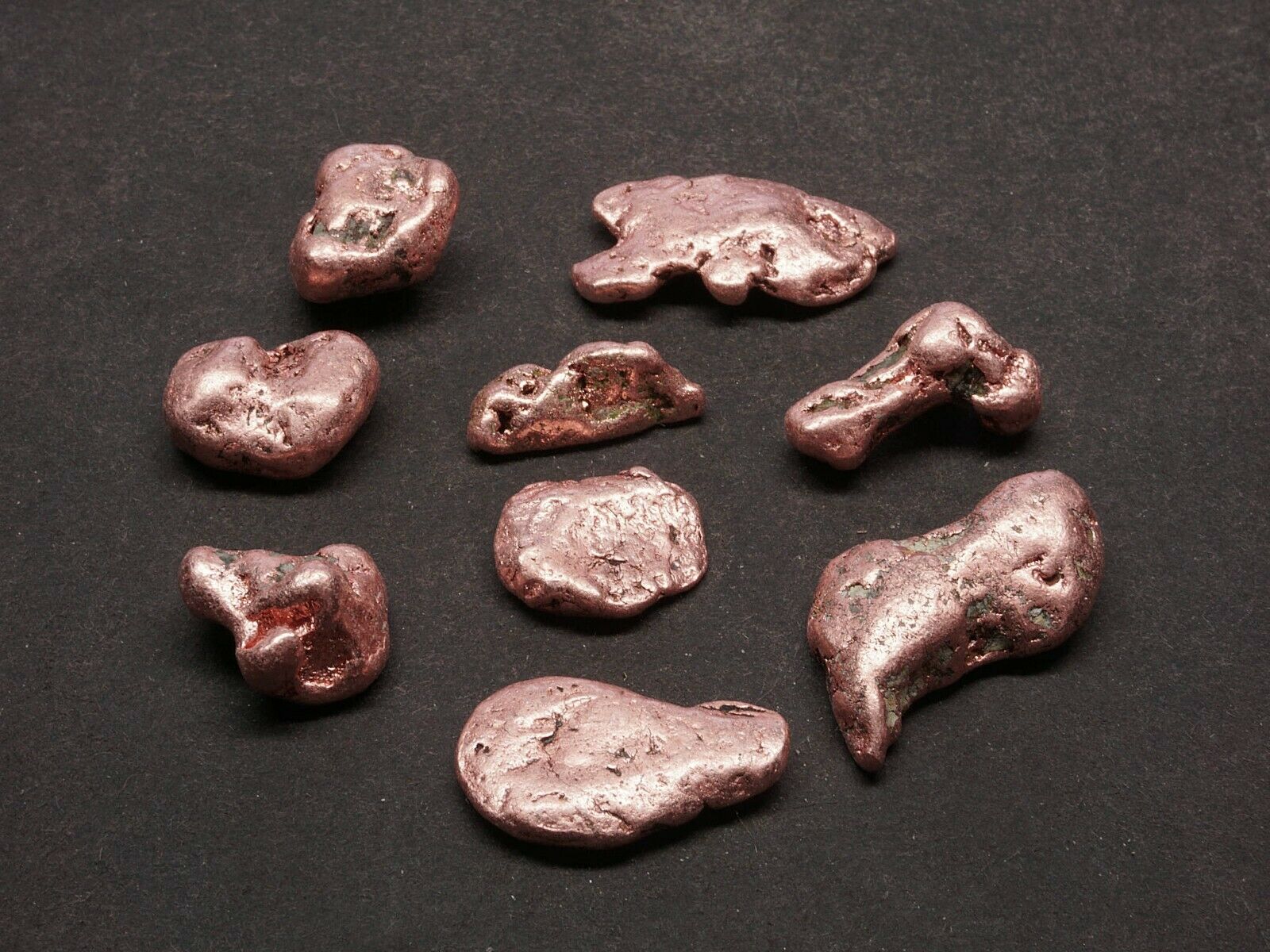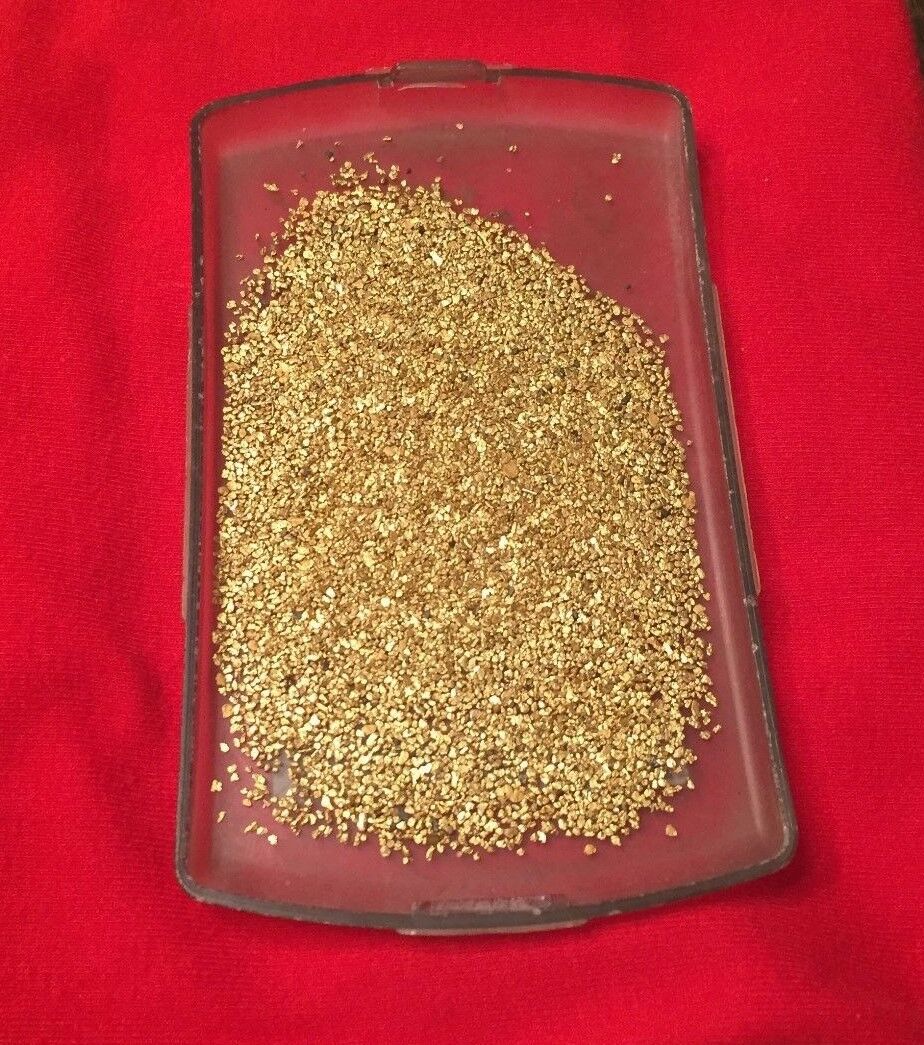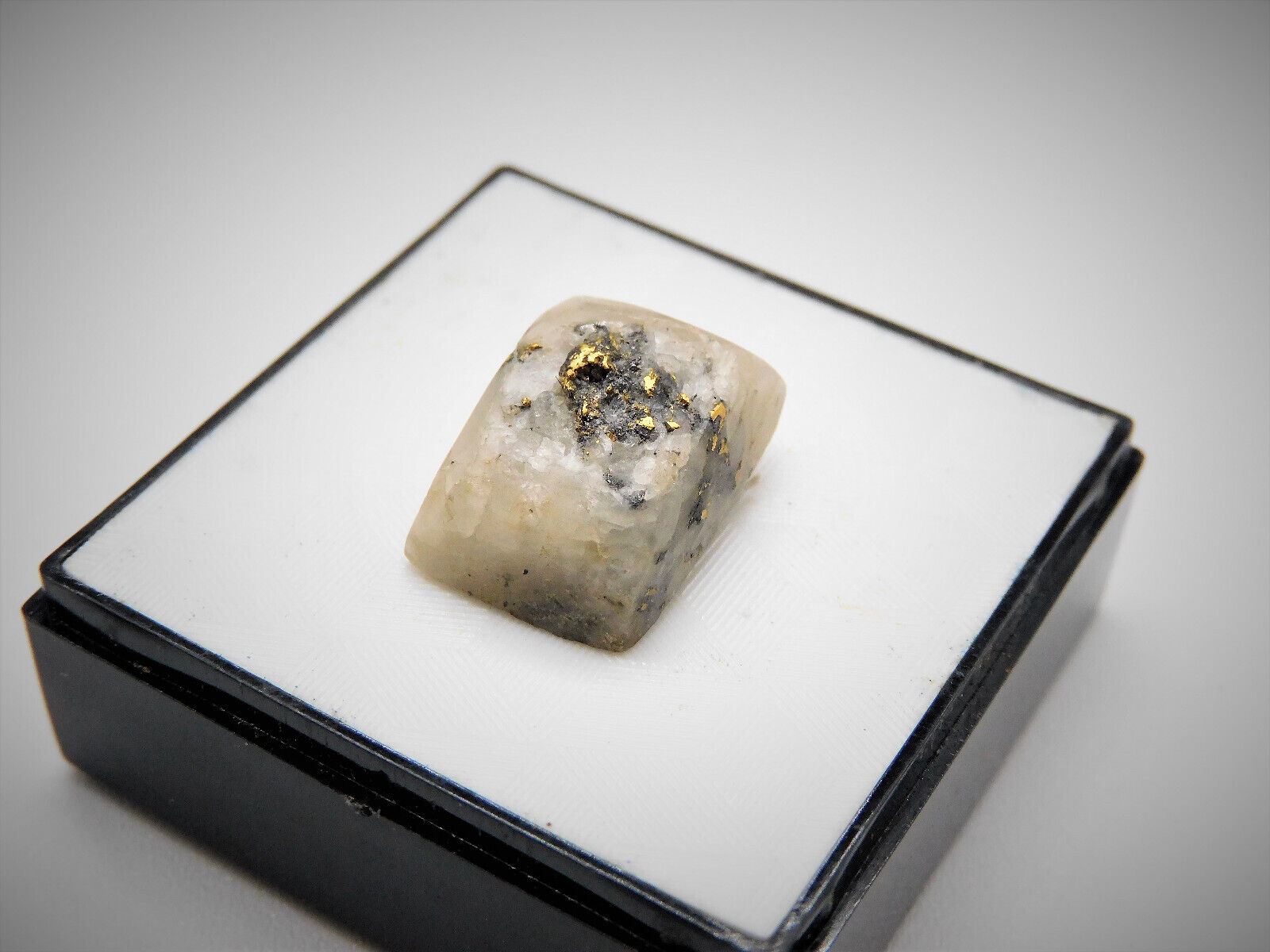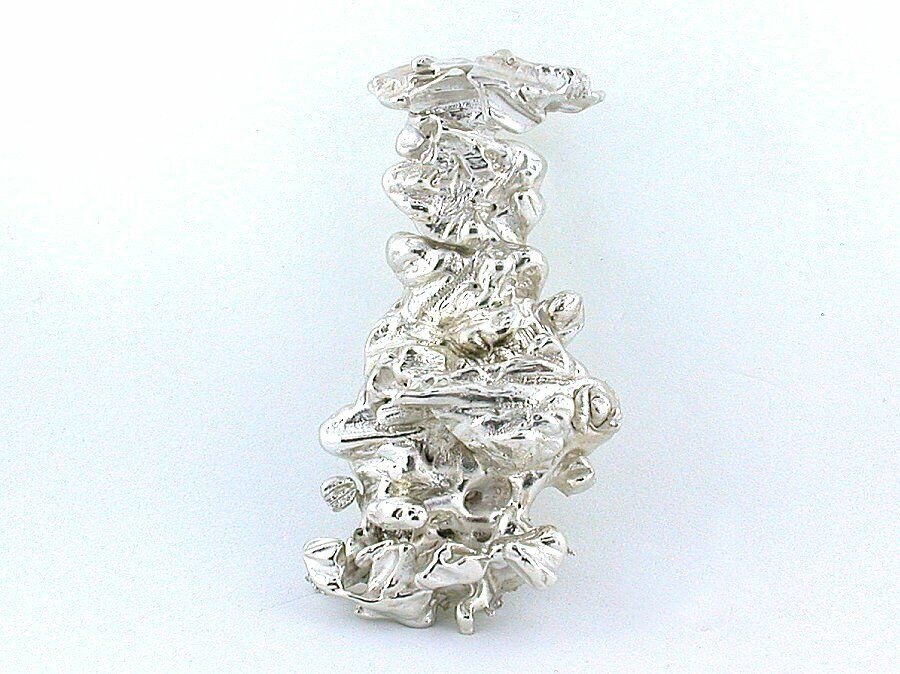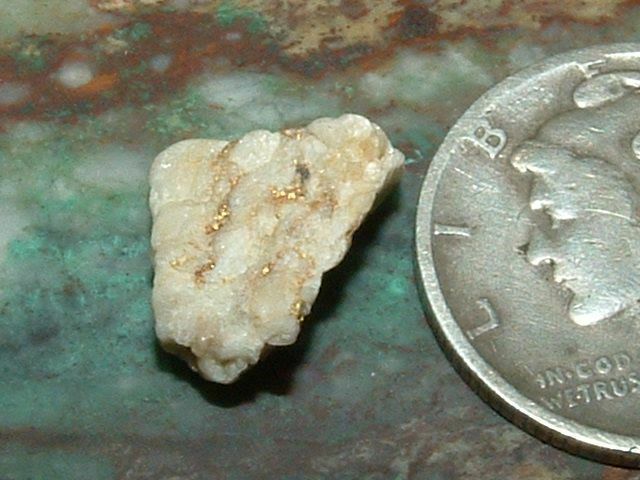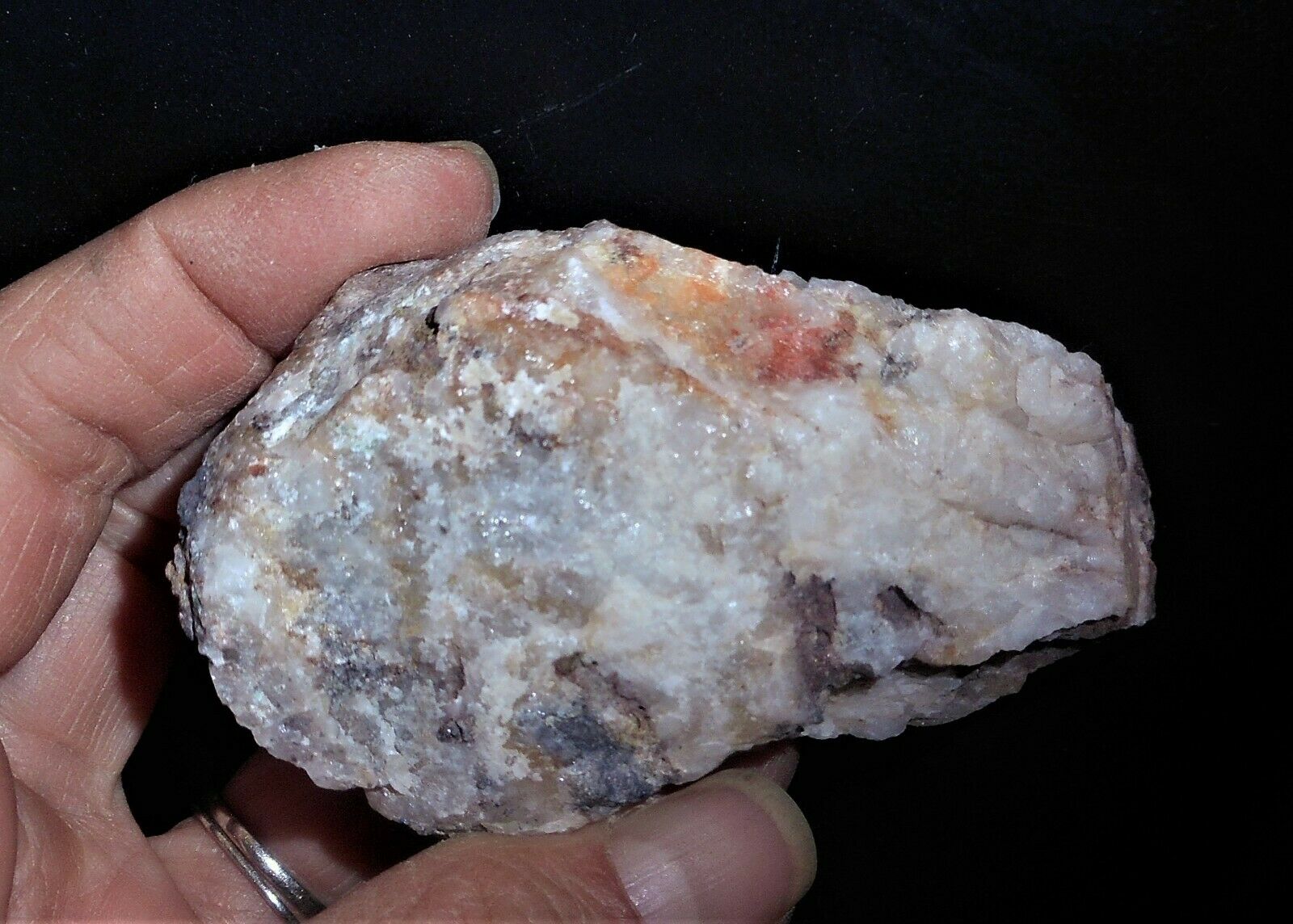-40%
NATURAL GOLD QUARTZ SPECIMEN .94 GRAMS NATIVE CALIFORNIA GOLD IN QUARTZ
$ 26.4
- Description
- Size Guide
Description
NATIVE GOLD QUARTZ SPECIMENfrom the
MOTHER LODE
R
uler is
1/4"
wide (6 mm). U.S. 10 cent coin is 17 mm in diameter.
S
pecimen weight:
14.5
G
rains (Troy) -
.94
G
ram
S
ize:
12.5X9.6X5.3
mm
C
heck out this pristine specimen from the Sierra Nevada Mtns. Raw, shimmering, California Au at it's finest, much of it in crystalline form, can be seen jutting out all over. This will make an exquisite micromount. Rust and amber-like quartz are beautifully-embedded with the gold. It's quite rich, however, know you'll not be getting your money's worth unless you understand you're buying a specimen, not gold bullion. I guarantee this to be an altogether naturally-mineralized specimen. Source is California.
Here, you have embryonic gold direct from the womb with silicon dioxide (quartz) still attached. All my specimens show visible gold and are
authentic
gold nuggets or gold quartz specimens.
U.S. SHIPPING .00
(includes USPS tracking to all U.S. destinations)
INTERNATIONAL CUSTOMERS S&H
.00 (sorry, the cost just keeps going up)
FAST REFUND OFFERED
(If, for any reason, you're not happy with this item). Contact me indicating you wish to return the item. As soon as it's received by me and everything's as it should be, you'll be issued a refund.
I poured through old mining dumps for years looking at orange-yellow-rusty rock through a loupe, but I never found a piece with visible gold.
Hydrothermal solutions carrying gold and silica crystallized into veins of gold quartz. This specimen comes from one of the many vein systems sourcing the immense placer deposits of the Sierra Nevada Mtns, the famed Mother Lode.
Weight Conversions:
15.43 GRAINS = 1 GRAM
31.103 GRAMS = 1 TROY OUNCE
24 GRAINS = 1 PENNYWEIGHT (DWT)
20 DWT = 1 TROY OUNCE
480 GRAINS = 1 TROY OUNCE
S&H
Discounted for combined shipments.
PAYMENTS
For U.S. buyers: We accept paypal
For intnl. customers: We accept paypal.
Pay securely with
www.paypal
.
Payment must be made within 7 days from close of auction. We ship as soon as funds clear. If you have questions, please ask them before bidding.
REFUNDS
We leave no stones un-turned insuring our customers get what they bargained for.
If you're not satisfied with this item, contact me. Then, if the problem can't be fixed, return product within 30 days in 'as purchased' condition for a full refund
WHAT CONSTITUTES PAYDIRT?
With present-day gold prices, the ground rules determining what 'paydirt’ is have changed. The 49ers left a lot of gold; but if a succession of miners worked a claim, there may not be enough metal remaining in the ground to justify a prudent man expending further time, money, and effort. Whether locating a new claim or shopping for one, it becomes obvious that all past mining activity should be taken into account. How does a claim or lease-holder know there's gold enough on a property to invest time and capital trying to mine it? The reality is most claims are acquired without knowing what's actually there.
Unless a claim-holder is allowed, both legally and physically, to test a claim in it's entirety breaking everything down into both surface components and subsurface units examining all zones which appear conducive to holding gold-bearing alluvium or lodes, he'll never know whether his claim is money in the bank or another worthless 'money pit'.
The thorough testing which must follow should reveal what kinds of potential the claim holds. Sampling, then, is the key - the ultimate decider of a mine's fate. Unfortunately, comprehensive testing for meaningful values is not necessarily the easiest phase of an operation. The fact is, gold-bearing formations aren't obliged to show themselves. They prefer to remain shrouded in secrecy hidden from ignorant prospectors. Much the same can be said for prior mining activities. In a hundred and fifty years, drainages may witness a hundred and fifty flood stages. That represents a lot of natural reclamation and redistribution. Remote leads, even relic diggings from earlier days, resist easy identification. Who knows how thorough the old timers were? What lies hidden beneath heavy foliage, forestation, and the countless boulder mounds? On some mining properties, it's surprising how truly sloppy and inefficient the miners of long ago were.
Now promoters with a claim to sell usually says something like “feel free to come and test our claim”. While such offers are certainly better than none, running a few test pans or buckets of dirt along the beach won't prove how much mineable-gold remains. It’s been my experience that easy-to-find-gold is often just a tease plant - salted there by Mother Nature. She's known to play tricks just to further confuse some easily-duped prospector. After recent flood waters receded, it's possible a skimpy scattering of color was left behind. Some blind, blundering prospector walked down to water’s edge with his gold pan, scratched out a crack, and ‘voila’. Yeller! Thus unfolded a brief but oh-so-exciting "Eureka!" moment. Then too, it wouldn’t be the first time a claim up for sale had been salted by some cagy promoter. Under-sampling causes inaccurate appraisals which, in the long run, actually do more harm than good. In mountainous terrain, placer gold deposits, and the formations which hold them, are deceptively difficult to locate. A great many formations holding values defy representative testing. Rock piles, massive boulders, trees, boulder packs, root systems, deep, water-filled pools, high benches, thick vegetation; bottom-lands with boo coo overburden, there seems no limit to the obstacles nature throws into a lowly prospector’s path. It’s likely this gold-bearing ground you're looking for, always difficult to read and predict, is submerged beneath the water table of a creek or river. On active drainages with running water, more often than not, I have seen this be the case. Pray tell, how do you test that kind of ground? With an excavator, pick and shovel, suction dredge? Maybe in the perfect miner’s world, you could. Pay dirt might lie far within an ancient Tertiary or Quaternary terrace high up on the side of a canyon wall. Gold has little trouble going undetected ten to thirty feet beneath overburden and heavily-forested land. Do you see the challenges? Wherever you are, the erratic, inconsistent nature of pay-streaks add further complexity to finding minable placer gold. Here is where being a bona fide prospector enters the picture. Through both analysis (testing) and the process of elimination (finding out where it’s not), the optimistic digger eventually will figure out whether he has a bona fide gold mine or only ‘the shaft’. It all begins with want-to. Then comes access, an approved plan of operations, insight, stick-to-ative-ness, and a willingness to dig like a gopher until you either do or don't find what you're searching for.
R
egardless of how many times a claim’s been worked, invariably, a little color's left behind. Perhaps there’s enough to satisfy the novice, recreational miner’s itch, just not enough to pay dividends for a more-demanding, occupational miner. A bit of leftover ‘color’ found at the beginning of a project typically causes excessive, irrational exuberance. I know this from first-hand experience. It happens a lot. Finding traces of gold, time and again, leads to throwing everything you’ve got into a project; a claim, perhaps, with no serious potential in the ground. Such scenarios happen more often than one might think. The biggest questions for the weak prospector to answer are, "can you find it?", “have you found it?”, "can you work it?", and "will it pay?"
In the lower 48 states, if you plan on mining B.L.M. or Forest Service-administered lands, there will be a heap of regulatory hurdles to overcome. Quite often, these are insurmountable. New rules pertaining to water usage have broken the will of many a prudent, well-meaning miner. No matter how grandiose one’s aspirations or how promising the property, right out of the gate, red tape can sabotage everything. Knowing, in advance, whether or not government agencies will approve a plan of operations authorizing preliminary sampling with mining to follow is an absolute must. Why bother to buy or stake mineral rights to a claim if the powers aren’t going to allow prospecting or mining?
"Can you find it?", “Have you found it?”, "Can you work it?", and "Will it pay?"
During my years of placer-mining, I considered one pennyweight (24 Grains) a good day's production. I hear you laughing and that’s o.k. To be clear, there were plenty of days when I mined a lot more than 1/20th of an oz. Then, there were all the other days. The vast majority of hardscrabble, lone-wolf mining types from whatever era you mention earned little more than subsistence wages if that. That's a reality I can relate to. One pennyweight of gold is one twentieth of an ounce. I doubt most of you could even conceive of working for such chump change. But that was then, this is now. During the 1980s and 1990s when I mined, gold was worth only a fraction (1/4) what it is today. Much depends on an individual’s perspective, how much he needs to survive, and what calculations are used to show profit. Through the period 1981 thru 1997, as a mining claim owner who enjoyed the outdoor lifestyle and loved digging for gold, I had no trouble getting by on 1/20th of an ounce of gold per day. A little fresh ‘shine’ added daily to your vial makes all the sweat and toil seem worthwhile.
"Can you find it?", “Have you found it?”, "Can you work it?", and "Will it pay?"
How successful your mining venture is ultimately depends on some of the variables mentioned in this article. This is gold mining, after all, so ‘success’ is a relative term. Only you know for sure whether you’re ahead of the game or not. Maybe you’re a person who doesn’t need money to be happy. Could be you only ‘want a little gold mine to call your own.’ Possibly, from your unique perspective, it’s more about the freedom and the independence. If it’s your claim, you’re the one who does the cleanups and gets to weigh up the gold. At least, I hope you're the one. Only you know what’s needed or how much his buyer is paying when gold is sold. Small scale placer miners tend to be a very individualistic lot. Every miner has to define for him or herself what constitutes success, profit, and failure. Here are the most important questions you will need to answer.
"Can you find it?", “have you found it?”, "can you work it?", and "will it pay?" author: Gene Ralph
Thanks for checking out our digs.
G
old of
E
ldorado
8-13-17







